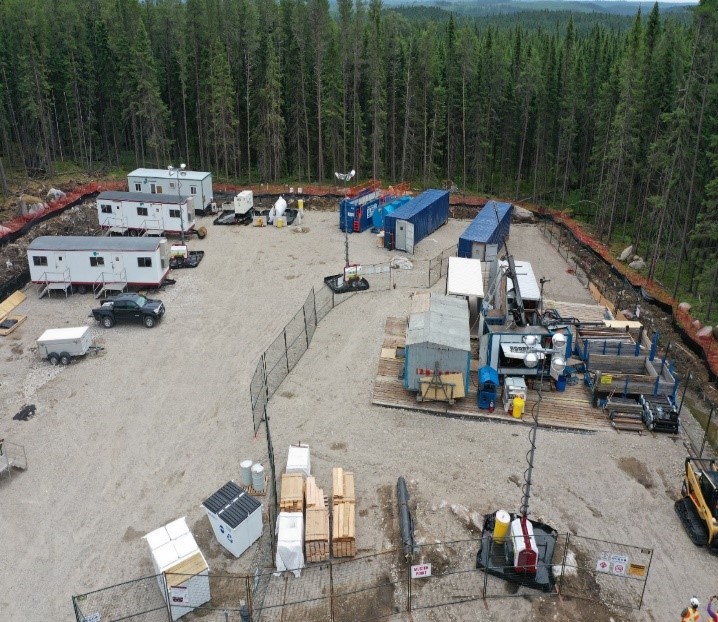The Nuclear Waste Management Organization (NWMO) is continuing site investigation work in the Ignace area to collect geoscientific data, information and knowledge as we advance Canada’s plan for the safe, long-term management of used nuclear fuel.
On Sept. 16, 2019, the NWMO finished drilling a second borehole in the Revell Batholith, an area located between Ignace and Wabigoon Lake Ojibway Nation. The NWMO is now conducting on-site downhole testing in the borehole, as well as laboratory testing of core and water samples. Drilling of a third borehole has also begun about 2.5 kilometres from the first and second borehole drilling sites in the area.
“This is an exciting period as we reached an important milestone when we completed drilling of our second borehole. We are continuing to test and analyze the core and water to further build our understanding of the geosphere. On-site downhole testing of the borehole will take about eight weeks,” said Sarah Hirschorn, NWMO Director of Geoscience.
Once on-site testing is complete, core and water samples collected during drilling are analyzed in Canadian and international laboratories over several months to gather information about a variety of parameters, such as geochemistry, geomechanics and petrophysics, which together allow us to develop an integrated understanding of the geosphere.
On-site preparation for boreholes four to six began in October in the same area.
The NWMO is working together with local leaders and communities, including area First Nation and Métis communities.
“The NWMO is committed to protecting people, water and the environment as we conduct our fieldwork activities. For example, in addition to following health, safety, and environment plans and procedures, cultural monitors from a local community are on-site during various fieldwork phases. It is a mutual sharing and learning process,” said Geoff Crann, Manager of Site Services at the NWMO.
The area is one of five currently involved in the NWMO’s site selection process, which includes technical and geoscientific studies (like borehole drilling), as well as work to build support as part of the NWMO’s efforts to identify a single, preferred location in an area with informed and willing hosts by 2024. The project will only proceed with interested communities, First Nation and Métis communities, and surrounding municipalities, working together to implement it.

